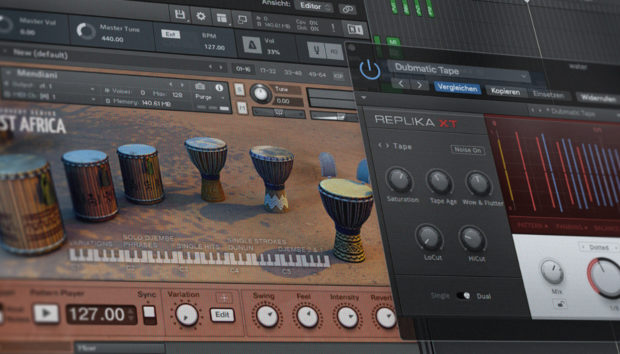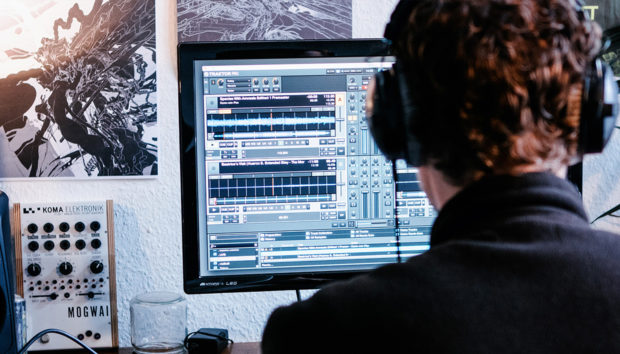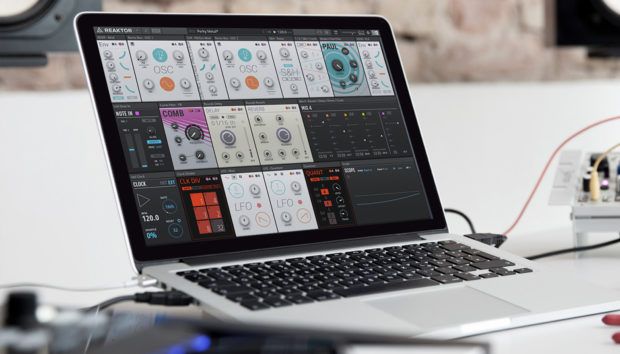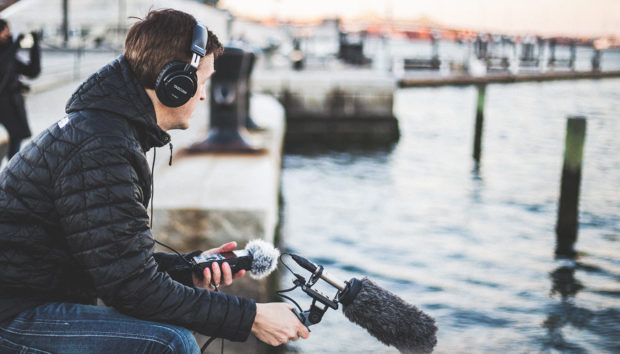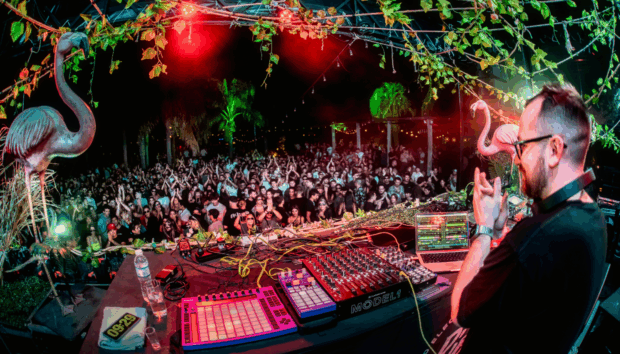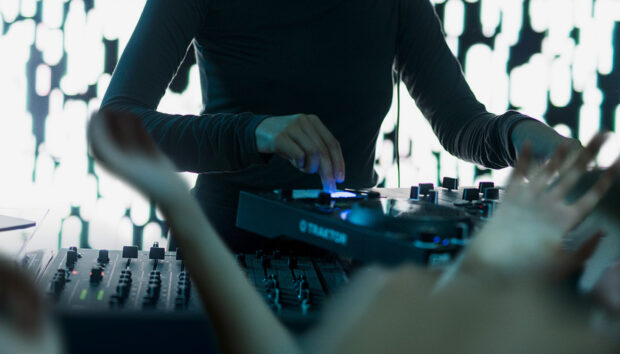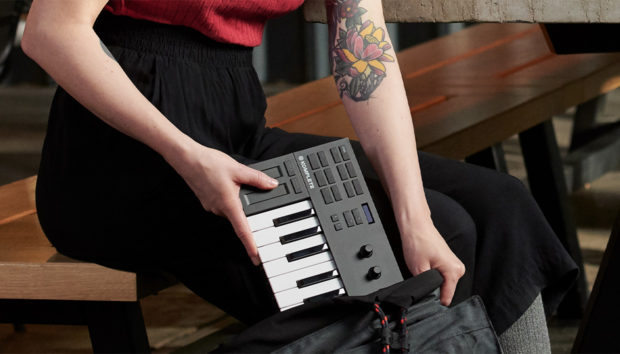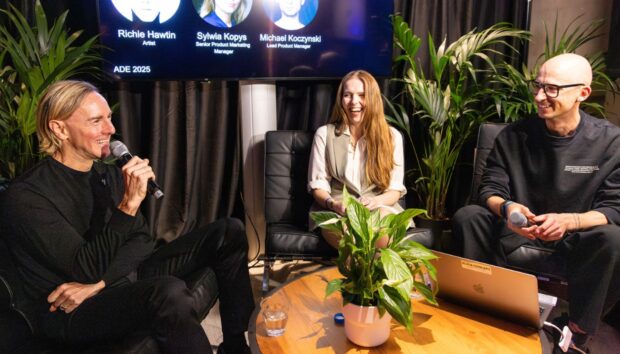Adana Twins’ latest single, “Keep On Coming,” is a collaboration with Ocean Flor and vocalist Jesse Trinidad that pushes their sound into even more expressive territory. Released via their own TAU imprint, the track opens with a vulnerable, cinematic feel and slowly builds into something more urgent and euphoric, to the point where Pete Tong opened his Coachella set with it.
One of the secret ingredients holding it all together is Guitar Rig.
Known for its flexibility and emotional tone shaping, Guitar Rig helps the Hamburg-based duo push subtle layers forward, add grit where needed, and give their basslines the weight they need to carry the track.
In this interview, they walk through how their use of Guitar Rig has shifted over the years – from raw distortion to sculpted emotion, and break down the specific techniques behind some of their favorite sounds on “Keep On Coming” and their remix of Josh Wink’s classic “Higher State of Consciousness.”
Jump to these sections:
- The emotional goal behind every Guitar Rig session
- Techniques for balancing grit with clarity
- Lo-fi layering and amp choices for intimacy
- Stereo tricks used on the Josh Wink remix
- How to get tracks to feel intimate yet club-ready
- Advice for producers chasing imperfect warmth
This one’s packed with workflow gold. Plus, try out Adana Twins’ sounds with free Guitar Rig presets.
When you open Guitar Rig these days, what’s usually the goal, tone shaping, movement, or mood?
When we open Guitar Rig in the studio, our primary goal is to craft emotions. Guitar Rig is our go-to for injecting some soul into our productions, especially when it comes to basslines that feel full, rich, and almost alive, like they’re carrying the weight of the track. We use it to add warmth or crispiness and character.
For example, we’ll run a synth bass through an amp to give it that gritty, organic depth, or layer on the Tape Delay to evoke a nostalgic, human feel. While tone shaping and movement are part of the process – using effects like Delays or panning to add life – these serve the bigger goal of emotional impact.
We’re not just tweaking knobs we’re asking, ‘Does this bassline make you feel something? Does it drive the mood?’ Guitar Rig’s versatility lets us chase that emotional core, whether we’re building a melancholic intro or a peak-time drop, but especially when our productions need an analog indie/rock touch – it’s an incredibly helpful tool.
The Adana Twins suggest trying: Duplicate your bass track or create a return track for parallel processing. Keep the original bass mono for clarity. Apply effects like delays or modulation to the secondary “stereo bass” track and automate them to add dynamic depth and texture.
How do you walk the line between subtle texture and overdoing it, especially on emotional tracks like “Keep On Coming”?
The balance between subtle texture and over-processing is crucial, especially on emotional tracks like ‘Keep On Coming’ where our bassline and elements need to shine without being overpowered. We used Guitar Rig here to enhance the emotional weight of the bassline and other layers, treating it like a fine tool.
For example, we apply an amp to a bassline to give it a warm, slightly saturated feel, but we keep the gain low and mix it with the dry signal to ensure the bass retains its clarity and punch. The goal is to make the bassline feel full and lively without drowning out the heart of the track.
On “Keep On Coming,” we also used Guitar Rig’s Reverb Delight to add subtle depth to a vocal chop. We’re big fans of automation sometimes to keep things dynamic – modulating parameters like delay feedback or filter cutoff to let the texture evolve without overpowering the mix. It’s about serving the emotion, not showing off.
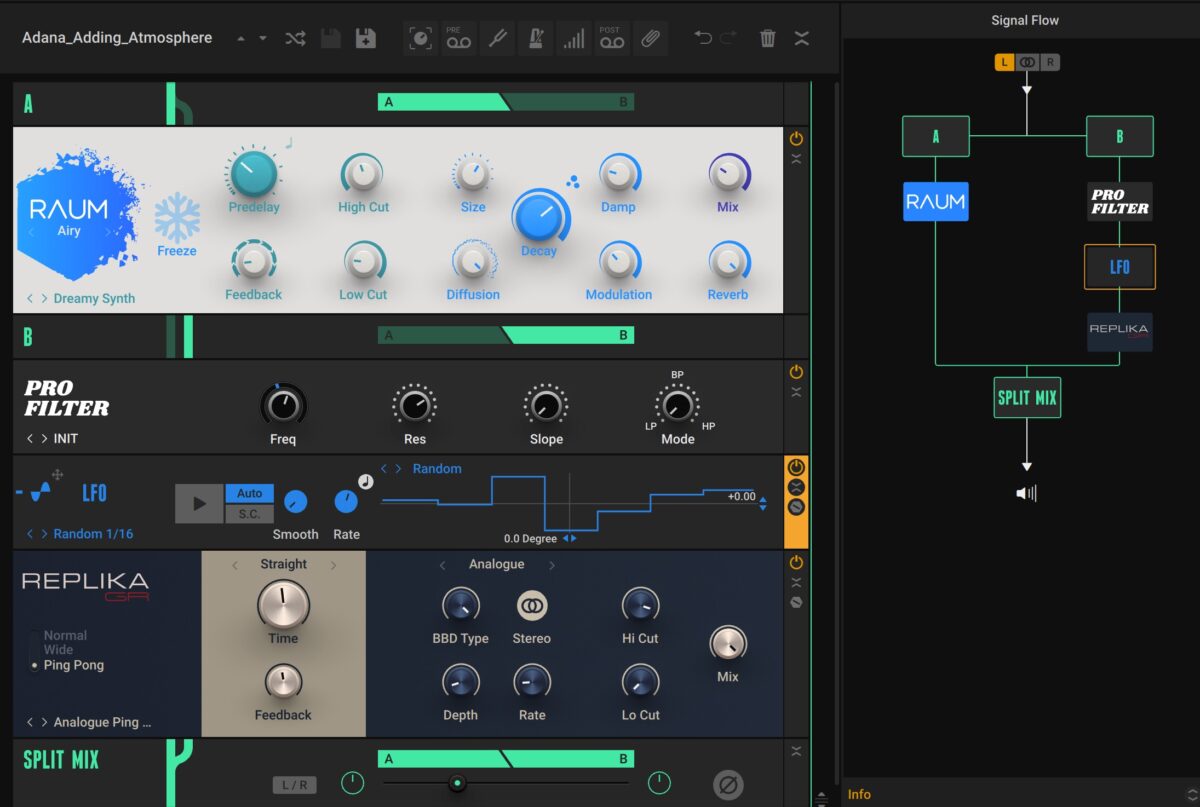
And I also used the ‘8 Bit Raum’ on the fat House chords for some extra crunch.
The Adana Twins suggest trying: Start with presets, then tweak. Guitar Rig’s preset library is a great starting point. Choose a preset that fits your mood, then adjust one parameter – like reverb decay or distortion drive – to tailor it to your track’s emotional core. Try out what sounds great.
Has your use of Guitar Rig changed since your early tracks, or is it still solving the same core problems for you?
Our use of Guitar Rig has evolved since our early EPs, when we were working more with samples. Back then, we used it primarily to add raw distortion, aiming for punchy, club-ready sounds.
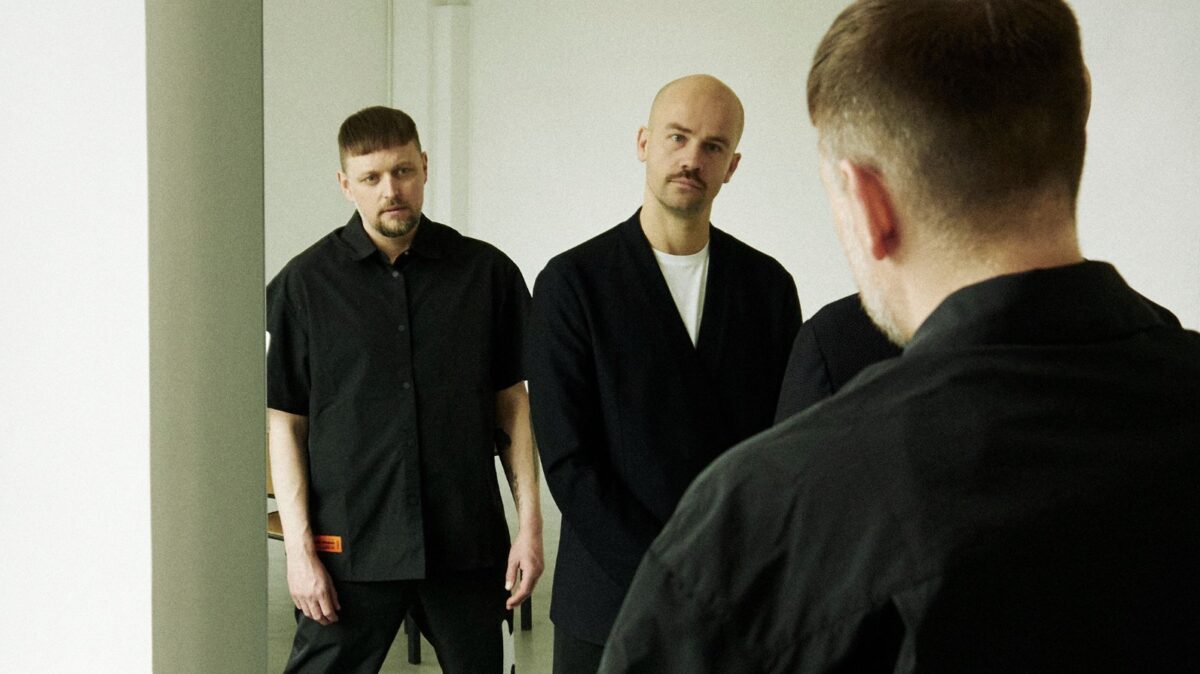
It was about solving the problem of making our tracks hit hard, throwing a Tubescreamer or Big Muff emulation on a bass synth to give it grit. Those early basslines were bold but sometimes lacked the emotional depth.
Now, with our last release on TAU for example, we’re using Guitar Rig to create more emotions and sculpt basslines that feel full and alive, carrying the track’s soul. We also dive into lo-fi components and modulation effects to add textures that enhance the mood.
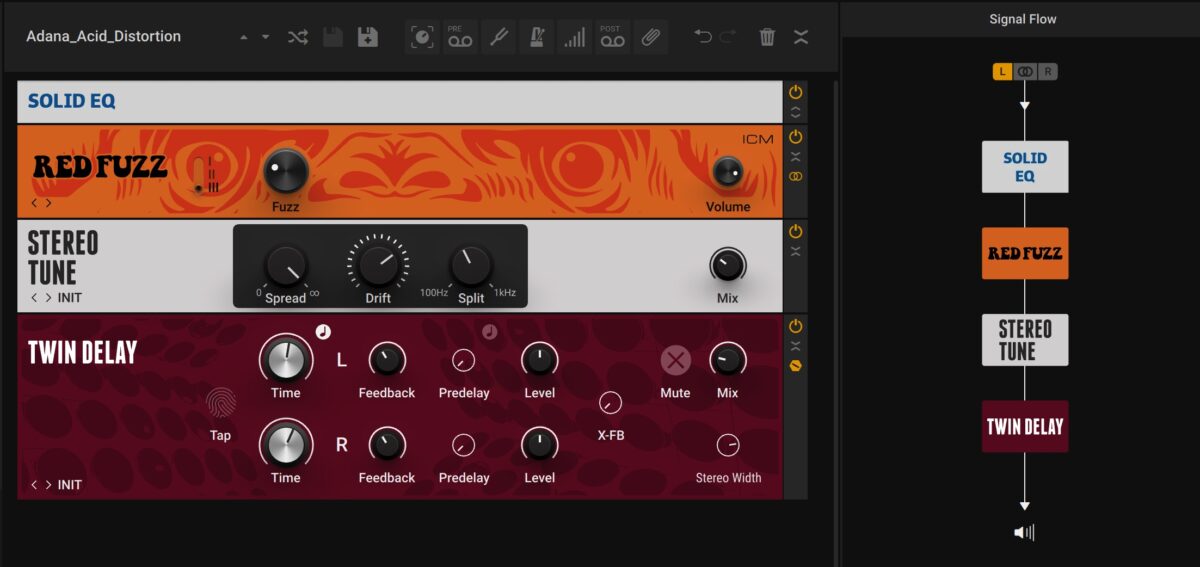
I used the Vocal Dimension preset for some vocal loops for example. While it still solves the core problem of adding character, it’s now more about making layers filled with emotion, bridging intimate moments with club energy. Guitar Rig’s expanded toolset matches our shift toward deeper, more evocative productions.
The Adana Twins suggest trying: Modulate anything with LFOs and macros. Assign LFOs or macros to virtually any parameter – like filter cutoff, delay time, or reverb mix – to create evolving, animated sounds. This is a great way to inject movement and keep your productions feeling fresh and dynamic.
When you need a layer to “breathe” in the stereo field, how does Guitar Rig help you get there?
When we want a layer to ‘breathe’ in the stereo field, Guitar Rig is one of our go-to tools for creating width and movement. The combination of stereo effects – chorus, phaser, panning modules, creative delays – lets us take a static sound and give it a sense of space and motion.
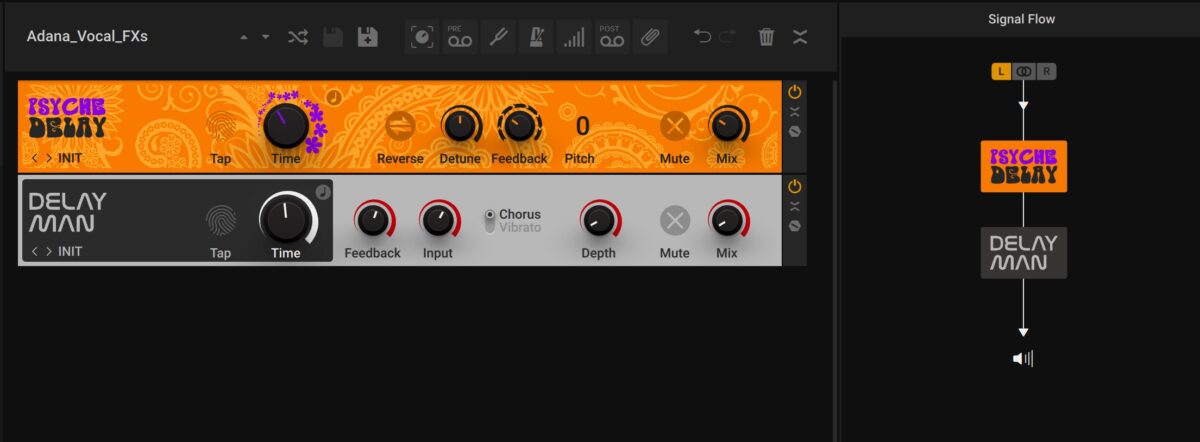
For example, we might use a Vintage Chorus or Psyche Delay to add subtle movement to a pad or vocal, helping it sit in the mix without clashing with other elements.

A technique we use often, especially for basslines, is to create a second track dedicated to stereo processing. On this duplicate, we use Guitar Rig to craft a wide stereo field; sometimes with amp emulations, stereo modulation, or mid/side effects – which we can then control separately from the main, mono bassline. This approach allows us to keep the low end focused and powerful, while the stereo-processed layer adds depth and excitement to the higher frequencies.
By blending these tracks, we achieve a bass sound that is both solid in the club and alive in the mix.
A great example of this in action was during our remix of Josh Wink’s “Higher State of Consciousness.” I bought two or three analog guitar pedals, thinking they’d give me the character I wanted for the bassline. However, after experimenting, I ended up using Guitar Rig instead because it provided me with more control and flexibility.
The result was so convincing that Josh himself was really impressed, so much so that he later reached out and asked me for the bassline, since the original from the ‘90s had been lost.
That moment really showed how powerful Guitar Rig can be for not just creative sound design, but also for delivering professional results that even legends appreciate.
The Adana Twins suggest trying: Experiment. Run vocals, synths, or drum loops through Guitar Rig’s amps and effects. Try the Fire Seeker amp on a vocal chop for a textured, emotional layer that complements a heavy bassline.
How does Guitar Rig support the emotional tone of tracks that need to feel intimate but still club-ready?
Guitar Rig is central to crafting tracks that feel intimate yet club-ready, especially for our fat basslines and emotionally charged elements. For intimacy, we often use the lo-fi components like Noise Machine to add an old-school, slightly imperfect texture. On “Keep On Coming,” we ran a bass synth through the Tweed Delight amp with low gain, giving it a warm, tactile quality – personal and inviting.
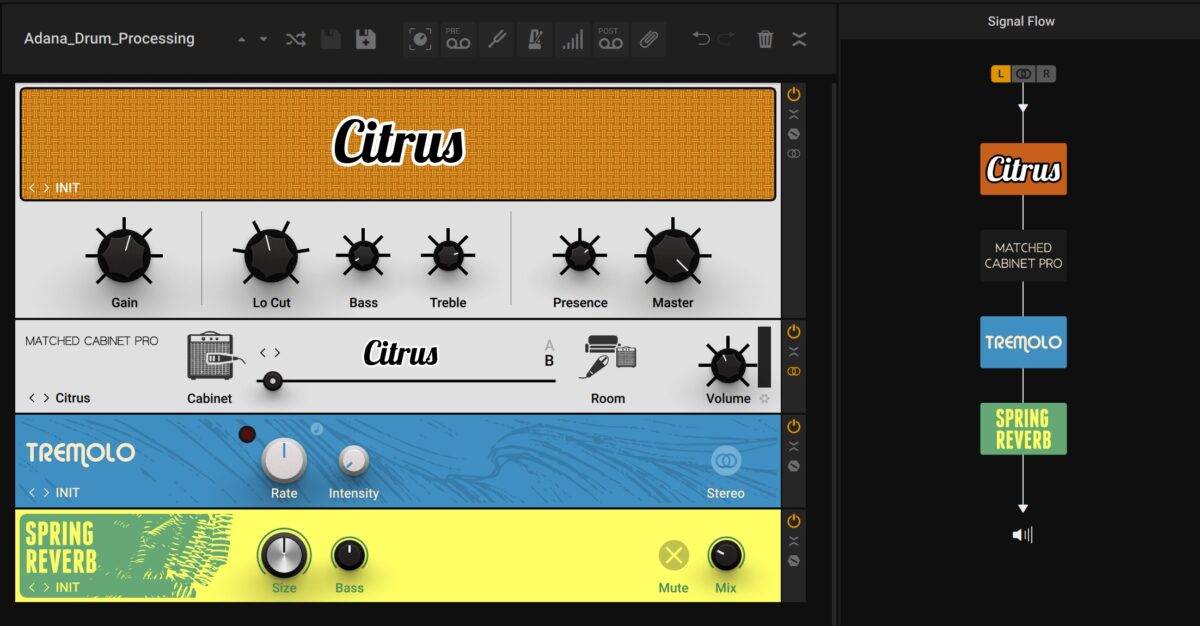
These subtle imperfections make the bassline feel relatable, drawing listeners in.
For the club-ready side, Guitar Rig’s amps let us push some of these basslines into powerful, dynamic territory. The Bass Rage amp, for instance, adds a gritty punch that ensures the bass cuts through a club system while retaining its emotional depth. We also use the Loop Machine Pro to layer rhythmic elements or vocal loops live.
By blending intimate textures with processed, driving elements – carefully EQ’d to sit in the mix – Guitar Rig helps us create basslines and layers that feel both personal and dancefloor-ready, making listeners feel connected while moving them physically.
For producers chasing that kind of warm, not-too-clean texture, what’s your one piece of advice for using Guitar Rig right?
Treat it like a playground and run anything – vocals, synths, drum loops, even field recordings – through its amps and effects.
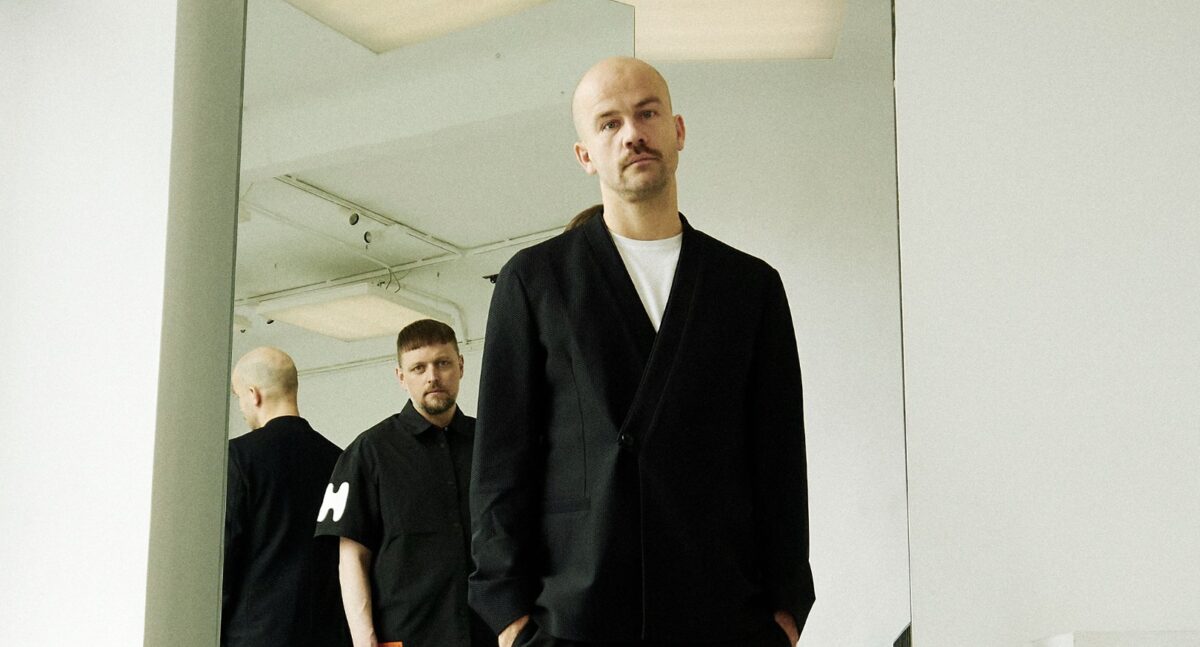
Experiment wildly with unconventional signal chains, like pairing a gritty tube amp with a warped tape delay or a lo-fi reverb on non-guitar sources. Dial in subtle saturation and analog-style warmth by tweaking the preamp and EQ settings, and don’t be afraid to push the plugins to their limits for happy accidents.
The key is to explore beyond traditional guitar sounds and let the plugin’s versatility shape your unique vibe.
Wrapping it all up
Big thanks to Adana Twins for giving us such a clear look at how Guitar Rig fits into their process. What stands out most is how casually integrated it is. It’s a go-to tool they trust when something needs to feel warmer, wider, or more alive. Whether it’s the subtle wobble of a lo-fi layer or the stereo bloom of a processed bass duplicate, they’re using it to push emotion forward without muddying the mix.
People are looking for ways to make their tracks hit harder without flattening the dynamics. To add grit without losing depth. Guitar Rig seems to offer them a kind of middle ground where they can keep experimenting without sacrificing polish.
It’s less about the specific settings and more about the mentality: use the tools, chase the feeling, and let the processing stay invisible unless it needs to speak up.
